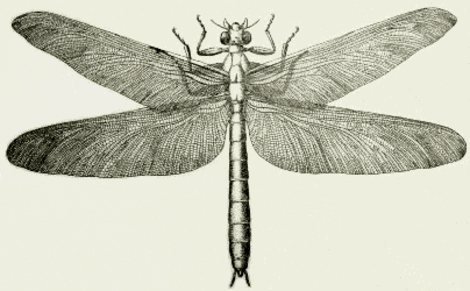 |
 |
 |
 |
 |
Produced
by the Population Genetics and Evolution class, Furman University |
||||
 |
 |
 |
 |
 |
Produced
by the Population Genetics and Evolution class, Furman University |
||||
 |
The
Carboniferous: Meganeura |
 |
||
| Meganeura
were dragonfly-like insects with a huge wingspan of about 70 centimeters,
or 2.5 feet (Allaby & Allaby 1999). Their large size was thought to
be due to an increased oxygen content in the atmosphere during the time
period in which they existed, however this is still being debated (Agaric
2007). The genus Meganeura includes the largest known flying
insect, Meganeura monyi. These insects lived near the edge of
bodies of water, such as streams and ponds. They were carnivores, and
mainly ate insects and small amphibians and vertebrates using their long
spine-covered legs to grab and hold their prey. Meganeura are
actually classified as griffinflies as opposed to dragonflies due to several
characteristic differences. The first difference is due to the vein patterns
of the insects. Meganeura actually means “large veins”,
and they contain similar vein patterns in their wings, whereas dragonflies
have varying patterns (Anissimov 2003). Another difference is that Meganeura
have a large number of appendages at the end of their abdomen. The purpose
of these appendages is not known for sure, but it is possible that Meganeura
used them for mating, laying eggs, or for anchoring (Agaric 2007). Also,
these insects were also probably slower than dragonflies due to their
large size (Anissimov 2003). Page by Lindsay Gerzel |
 |
| Meganeura. Photo From: Agaric. 2007.
|
|
|
Agaric. 2007. Meganeura: giant carboniferous dragonfly. Associated Context. Accessed March 3, 2010. Allaby A, Allaby M. 1999. Meganeura. A Dictionary of Earth Sciences. Accessed March 3, 2010. Anissimov M. 2003. What is Meganeura? Wise Geek. Accessed March 3, 2010. |